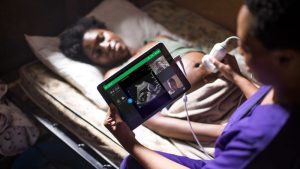Medtech leader Philips recently augmented its ultrasound offerings with advanced hemodynamic assessment and measurement capabilities on Lumify, its handheld point-of-care ultrasound. The advent of Pulse Wave Doppler ultrasound does much to broaden the utility of Lumify; clinicians will be able to quantify blood flow in a variety of diagnostic applications, such as vascular, cardiology, abdominal, urology, obstetrics, and gynecology. Obstetric measurements meant to provide assistance in early assessment of gestational age and high-risk pregnancy diagnosis will also bolster Lumify's range of functionality.
Pulse Wave Doppler gives clinicians the tools to extract as much valuable information and context as possible in the process of assessing hemodynamic patterns to discern between arterial and venous blood flow as well as evaluate hemodynamic function. Diagnostic confidence and decision-making turnaround in all kinds of care settings are improved greatly through the resulting hemodynamic measurements. The benefits of the technology, which features 2D and color imaging in addition to access to tele-ultrasound capabilities (Lumify with Collaboration Live powered by Reacts), could be particularly groundbreaking in cardiology and emergency medicine scenarios.
Matthijs Groot Wassink, General Manager of point-of-care ultrasound at Philips, said, “By applying Philips’ expertise in cardiovascular care, imaging, and patient monitoring to Philips handheld ultrasound—Lumify—we are committed to deliver a dedicated, innovative point-of-care portfolio, enabling clinicians to quickly assess hemodynamics—including cardiovascular function, organ perfusion, and fetal assessment—in a daily routine, to identify abnormalities and intervene quickly." Lumify has found popularity in community-based mother and child care programs, improving outcomes for underserved communities worldwide. The Philips Foundation established a program in Kenya to teach midwives how to operate ultrasound-based prenatal pregnancy screenings in village clinics with telehealth support from remote radiologists.























